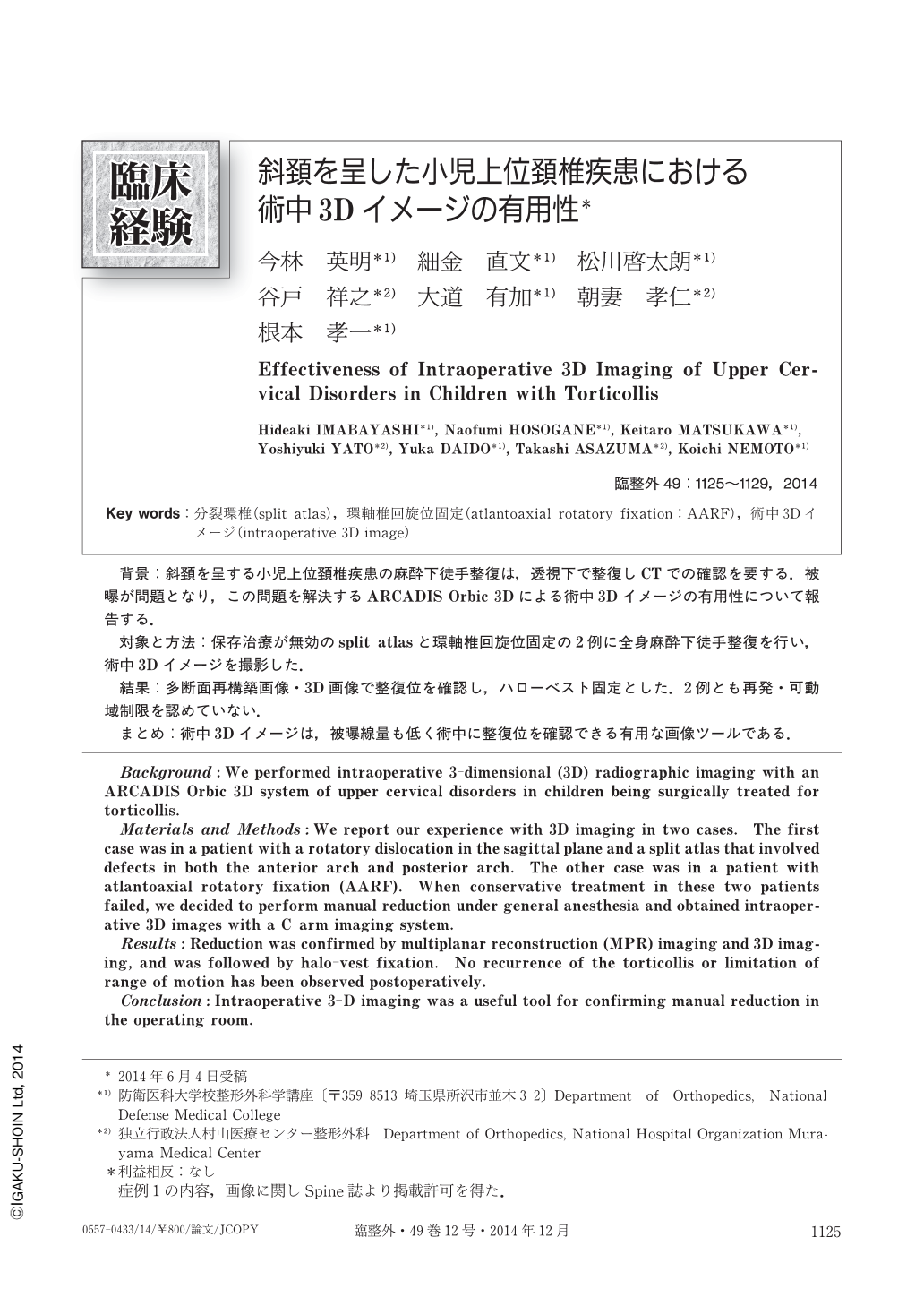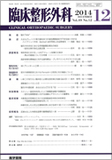Japanese
English
- 有料閲覧
- Abstract 文献概要
- 1ページ目 Look Inside
- 参考文献 Reference
背景:斜頚を呈する小児上位頚椎疾患の麻酔下徒手整復は,透視下で整復しCTでの確認を要する.被曝が問題となり,この問題を解決するARCADIS Orbic 3Dによる術中3Dイメージの有用性について報告する.
対象と方法:保存治療が無効のsplit atlasと環軸椎回旋位固定の2例に全身麻酔下徒手整復を行い,術中3Dイメージを撮影した.
結果:多断面再構築画像・3D画像で整復位を確認し,ハローベスト固定とした.2例とも再発・可動域制限を認めていない.
まとめ:術中3Dイメージは,被曝線量も低く術中に整復位を確認できる有用な画像ツールである.
Background:We performed intraoperative 3-dimensional (3D) radiographic imaging with an ARCADIS Orbic 3D system of upper cervical disorders in children being surgically treated for torticollis.
Materials and Methods:We report our experience with 3D imaging in two cases. The first case was in a patient with a rotatory dislocation in the sagittal plane and a split atlas that involved defects in both the anterior arch and posterior arch. The other case was in a patient with atlantoaxial rotatory fixation (AARF). When conservative treatment in these two patients failed, we decided to perform manual reduction under general anesthesia and obtained intraoperative 3D images with a C-arm imaging system.
Results:Reduction was confirmed by multiplanar reconstruction (MPR) imaging and 3D imaging, and was followed by halo-vest fixation. No recurrence of the torticollis or limitation of range of motion has been observed postoperatively.
Conclusion:Intraoperative 3-D imaging was a useful tool for confirming manual reduction in the operating room.

Copyright © 2014, Igaku-Shoin Ltd. All rights reserved.


